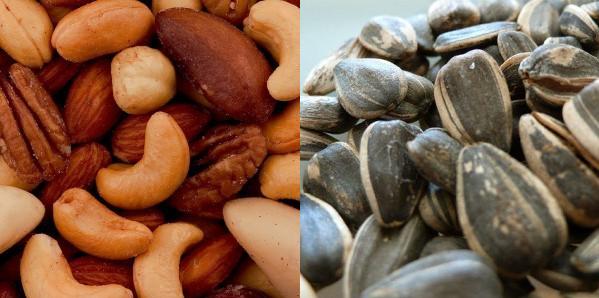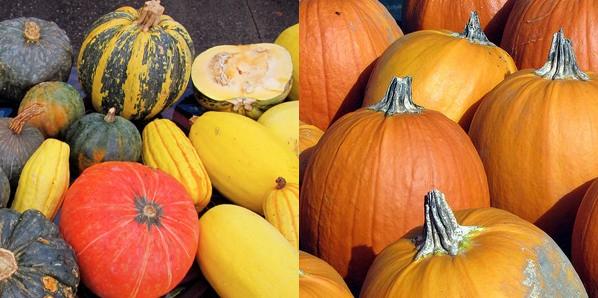(Most of Steve’s family is gluten free.)
It wasn’t that long ago that the settlers of America depended solely on what they could grow and store to get them through the winter. One of my goals is to be able to produce enough food to last me all year. This of course means that I will have to store it.
Grains & Lentils

Grains – Wheat, Grain Corn, Amaranth, Oats, Rye, and Rice
Lentils (Beans) – Kidney, Lima, Pinto, Anasazi and others
Harvest – After harvest, dry these for several days or weeks to make sure that there is no moisture present before storing to prevent mold from growing. Optimum moisture level is less than 10%.
Store in the coolest, driest place you can in airtight containers. I suggest adding 1 bay leaf per gallon of storage and/or use dry ice or some other method to purge the oxygen from the container before storing. This will make it very difficult for micro organisms and bugs to ruin your food.
Life – If stored properly these crops can last 30 years or more.
Nuts & Seeds

Nuts – Almonds, Cashews, Hazelnuts, Peanuts, Walnuts and Pecans
Seeds – Sunflower, Pumpkin, Hemp, Chia, and Flaxseed
Harvest – When you harvest nuts for storage you want to leave them in their shells. The exception to that rule is Cashews. Cashew shells have a toxic resin in them that will leach onto the nut. This needs to be carefully removed before storage.
Store – The best way to store nuts is in an air tight container in the freezer. In other words the coldest, darkest place you can find. A good way to extend the life of your nuts is to roast them before storage. If you decide to do this, you should take them out of their shells first.
Life – Nuts & Seeds in the pantry will go bad in 3 months to a year depending on the nut and the amount of moisture and oil it contains. If frozen, they could last a couple years. Roasted nuts can last 5 years or more.
Root Crops

Roots – Potatoes, Turnips,Rutabaga, Sweet Potatoes, Salsify, Beets, Carrots and Parsnips
Harvest – When you harvest root crops it is important to wash them thoroughly to make sure you are not storing “bugs” with them. When to harvest varies by crop. Some can tolerate a light freeze (28 to 32oF). Irish potatoes should be harvested in July when the plant starts yellowing. Let your potatoes cure in a shady spot for a few days before storing. Don’t expose them to direct sunlight or they will green.
Store – Most root crops prefer cold, dark and humid storage. In nature they would remain in the ground all winter and turn into new plants in the spring. If you have light winters, you could just cover with mulch and leave them in the ground. Otherwise you can store them in your root cellar either in moist sand, in a refrigerator, or in a box with a damp burlap sack over it.
Life – Most roots last 2 to 4 months, depending on conditions. If you leave them in the ground, make sure you harvest them before the soil warms back up, or they will start to grow into new plants.
Alliums

Alliums – Garlic, Onion, Shallots and Leeks
Harvest these flavorful crops when the leaves start to dry up. Harvest garlic when the outside leaves have turned brown, but the inner leaves are still green. Harvest onions and shallots when the leaves wither and fall over. Harvest leeks as needed, or when the stalk is about the size of your thumb or 1 inch around.
Store – allow your garlic, onions, and shallots to cure at room temperature (70 to 80 oF) with plenty of air flow for a week. After they have cured, place them in nylon stockings or paper bags with holes punched in them. Then store in a cold, dry and dark place; 35 to 40oF is optimum. To store leeks you basically want to transplant them into a pot or a bucket and stored in your root cellar, or similar cool dark place. Do not trim the tops until you are ready to eat them.
Life – Depending on how cold and dark your storage is garlic, onions, and shallots can last 10 months to a year. “Transplanted” leeks will last 2 to 3 months.
Squash & Pumpkins

Squash – Winter(Spaghetti), Acorn, Butternut, Buttercup, Blue Hubbards and Pumpkins
Harvest these bad boys in the fall. Leave a 2 to 3inch nub. Wash any soil off of them and allow them to cure at room temperature (70 to 80) with plenty of air flow for 1 or 2 weeks. This will allow any excess moisture to escape and sweeten up the fruit.
Store in a cool dark place around 50 oF with moderate humidity (50 to 75%). It is advisable to wrap each individually in paper and store in a flats or layers, for easy examination.
Life – Acorn squash lasts 1 to 2 months. Spaghetti lasts about 1 month. Buttercup & Butternut last 2 to 3 months. Pumpkins can last up to 3 months. Blue Hubbards last 5 to 7 months.
Fruits

Fruits – Apples, Pears, Oranges and Persimmons
Harvest – Fruits for storage should be picked just before they are ripe, so they have time to ripen in storage. It is also important to select fruits without any blemishes, because they will last longer as well.
Store – Apples can be store in two ways, individually wrapped in paper placed in a box in a cool cellar, or in the refrigerator crisper with a moist paper towel. Both apples and pears store best in temperatures between 30 and 35 oF and high humidity (80 to 90%). Oranges and persimmons can also be placed in the refrigerator, but will last longer if they are frozen or dehydrated.
Life – Apples stored in the fridge property can last a month. If wrapped individually some varieties can last 3 to 4 months. Make sure to check on them frequently, because if one is going bad, it will accelerate the deterioration of the others. Pears are similar to apples, but don’t last quite as long. Oranges and persimmons can last 2 to 4 weeks in the refrigerator, but if dehydrated or frozen they can last 10 to 12 months.

Be careful to check your storage often for rot. As they say, “One bad apple can spoil the barrel.” This is so true. Rot is caused by bacteria and/or fungus which will spread quickly if not monitored.
Also, be careful not to store your roots and squash with your alliums and make sure your fruits are stored all by themselves. Fruits release ethylene gas as they break down, which will cause your other crops to deteriorate faster.
Tell us in the comments below if you know of any other crops that are great for storage.
References
Storage
http://www.areyouprepared.com/7-Steps-to-Food-Storage-s/144.htm
https://mylarpro.com/four-enemies-to-food-storage/
All Crops
http://www.johnnyseeds.com/t-storagecrops.aspx
http://theprepperproject.com/top-6-storage-crops-for-preppers/
http://www.motherearthnews.com/organic-gardening/storage-crops-zm0z12aszsie.aspx#axzz36LAFQYBk
Grains
https://www.lds.org/topics/food-storage/longer-term-food-supply
Nuts
http://www.gardeningplaces.com/articles/food-storage-nuts-seeds.htm
http://www.livestrong.com/article/556826-how-to-store-raw-almonds-cashews/
http://www.gardeningplaces.com/articles/food-storage-nuts-seeds.htm
http://www.survivalistboards.com/showthread.php?t=185755
http://www.azcentral.com/style/hfe/food/articles/20111109healthy-seed-types-benefits.html
Roots
http://ex10sion.missouri.edu/p/g6226
http://ccesuffolk.org/assets/Horticulture-Leaflets/Vegetable-Harvest-and-Storage.pdf
Squash
http://www.ces.ncsu.edu/hil/hil-24-c.html
http://bonnieplants.com/library/how-to-store-winter-squash/
Alliums
http://www.theyummylife.com/store_onions_garlic_shallots
http://www.gardeners.com/how-to/harvest-cure-store-onions/7366.html
Fruits
http://www.thekitchn.com/how-to-store-apples-for-the-wi-68778
http://www.wikihow.com/Store-Apples
http://frugalliving.about.com/od/storingfoods/ht/How-To-Store-Pears-For-Winter.htm
http://extension.usu.edu/htm/faq/faq_q=2157
http://www.pittmandavis.com/articles/citrus/oranges/navel-oranges/how-to-store-navel-oranges.html


